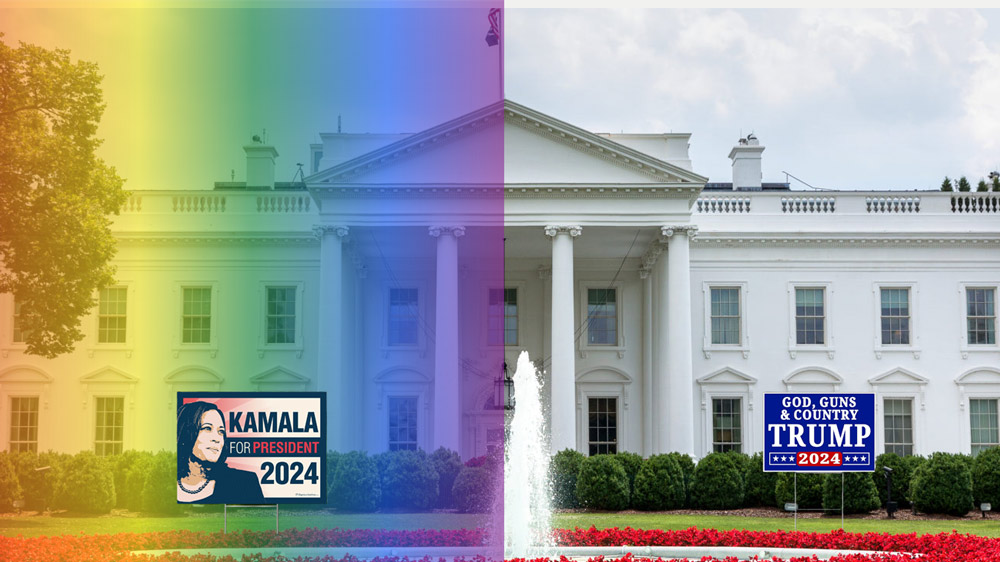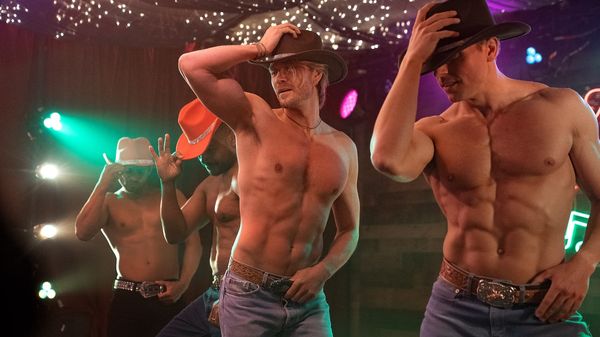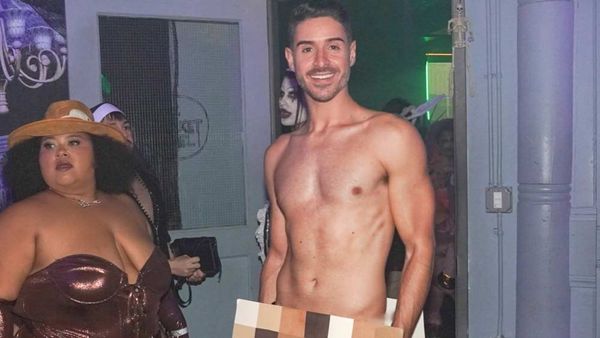
April 9, 2017
All That Jazz!
Sura Wood READ TIME: 4 MIN.
Imagine Duke Ellington with a paintbrush instead of tinkling piano keys, and you have the verve and on-the-move vibe of American artist Stuart Davis. From the late teens and early 1920s until his death in 1964, he suffused European Modernism with a brash, distinctly American brand of simultaneity, cacophony, optimism and turbo-charged 20th-century life, combined with the sights and sounds of burgeoning cities, high and low culture, and the vocabulary of advertising. Considered an important innovator of abstraction and a giant of modernism whose work was a forerunner of Pop Art, he's the subject of "Stuart Davis: In Full Swing," a touring show of 75 artworks and studies at the de Young Museum that's more microcosm than comprehensive retrospective.
The son of a pair of Philadelphia artists, Davis was mentored by the Ashcan school, which favored urban grit and was influenced by the sensational avant-garde art show at the 1913 New York Armory, where, at age of 21, he was exposed to Picasso, Duchamp, Gauguin, Leger, whose spirit he would later channel, and crucially, Matisse. The exhibition sealed his conviction to become a modern artist. An amateur pianist who frequented dive bars in Hoboken and Harlem where Earl Hines could be heard vigorously attacking the piano, Davis was a jazz aficionado. Adopting Ellington's lyric, "It don't mean a thing if it ain't got that swing," as a mantra, he translated the syncopated rhythms and improvisational riffs of that most American of art-forms into an upbeat visual style that's simultaneously loose and tight.
Being a man of his times, Davis liked his "liquor and his liberty" - pleasure is key to his art - and he was also a heavy smoker, which may or may not explain his affinity for Lucky Strike cigarettes, a masculine, iconic American brand that he deconstructed in small-scale collages that recall George Braque and Picasso. Making good on his ambition to take European cubism out of the bistro and into populist America, he injected a jazzy cohesion into works such as "Lucky Strike (1921), in which he painted an illusion of loose tobacco punctuated by the familiar logo, tobacco stamps and packaging seals.
In 1928, Paris beckoned, and Davis settled in Montparnasse surrounded by a community of arty ex-pats like Alexander Calder and Gertrude Stein. He captured the charms and romantic, picture-book quality of the place in the 1920s, with its little neighborhoods and narrow streets emptying into unexpected alleyways ("Place Pasdeloup," 1928), and cheery, crayon-colored buildings rising up from plazas ("Place des Vosges No. 2," 1928). In "Arch Hotel" (1929), a jumbo-sized wine bottle awaits imbibers in the middle of a street, stationed next to half a lemon. A black archway frames the titular hotel on the right-hand side. These cartoonish paintings are examples of the witty, effective way Davis deployed bold color to define architectural compositions. He regarded the 13 months he spent in Paris as the most exciting and rewarding of his career, and his time there certainly must have agreed with him, because the works from this period are among his most exuberant.
Nevertheless, the following year he decided that New York City was the place to be, and upon returning Stateside, he embraced the hard-driving, unforgiving metropolis. Created at the invitation of MoMA, "New York Mural" (1932), with its stacks of buildings and skyscrapers, is a view from the street, seen by throngs that crowded the avenues in the city of Gershwin. Adapting the flat style of advertising, Davis incorporated images related to the failed 1928 presidential run of New York governor Alfred Smith, whose trademark derby and bow tie defy gravity, as does that steel mountain-peak presiding over it all, the Empire State Building.
"Landscape, Gloucester" (1922, 51, 57), which looks like a dotted gift box cracked opened and broken down into parts on a jewel-blue background, is one of many cubist-derived pieces that Davis based on his visits to the Massachusetts town. With their overlapping dockside clapboard buildings, floating barrels and gas pumps, "Red Cart" (1932) and "Landscape with Garage Lights" (1931-32) are kinetic. But Davis' appeal is primarily cerebral, not emotional. Nowhere is that more apparent than in his penchant for reprising and reworking previous compositions and motifs, a practice he engaged in from 1939 onward that's his version of jazz's variations on a theme. For instance, "The Mellow Pad" (1945-51), a reference to a cool jazz man's abode, adds an allusion to musical notes, while borrowing formal elements from "House and Street" (1931), a bifurcated stage-set depiction of the elevated Third Avenue train in Lower Manhattan converging with a building facade. "American Painting" (1932), a group portrait of the artist with friends Willem de Kooning, Arshile Gorky and John Graham, was revisited on at least three occasions, and so on. Though intellectually interesting, these excursions can feel repetitive over the course of the show.
The last piece in the exhibition, "Fin" (1962-64), whose title is taken from the closing word of a French film Davis had been watching on television, is a work-in-progress bordered in black like a frame of celluloid, letters tumbling down the canvas, sections delineated by masking tape he left there. He had added the word to the painting just before going to sleep. It was still on his easel when he died later that night.
Through August 6; deyoungmuseum.org







